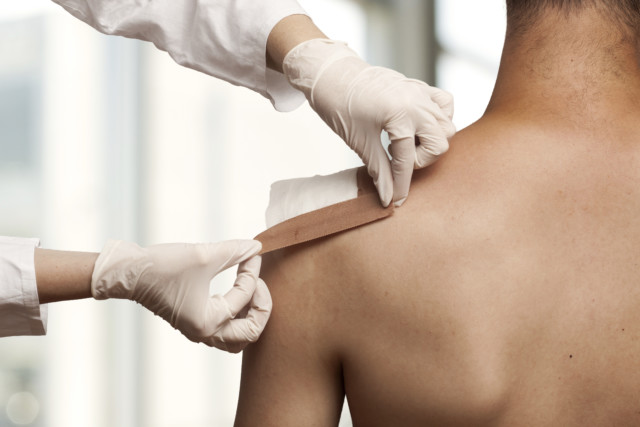Surgical Dermatology
Dr. Haberle specializes in the treatment and removal of a wide variety of benign and malignant skin conditions.
Benign lesions include:
- Cysts
- Lipomas
- Moles
- Skin Tags
- Seborrheic Keratosis
- Sebaceous Gland Hyperplasia
- Milia

Malignant lesions include various types of skin cancer. Treatment options of surgical dermatology for skin cancer include:
Topical Chemotherapy Medication:
There are two FDA-approved topical chemotherapy creams, 5-fluorouracil (5-FU) and Imiquimod, for the treatment of actinic kerasoses (precancers) and superficial basal carcinomas. They have also been shown to be successful in the treatment of Bowen’s disease, an early form of squamous cell carcinoma. 5-FU works by having a direct toxic effect on cancerous cells. Imiquimod is an immunomodulator cream that stimulates the immune system to produce interferon, a chemical that attacks precancerous and cancerous cells.
Electrodessication & Curettage (E&C):
A surgical instrument called a curette is used to remove abnormal cells by scraping down to a layer of uninvolved tissue and then desiccation (electrosurgery) is performed with a small, metal instrument to widen the margin and cauterize the wound to minimize bleeding. The wound is left to heal without sutures and typically heals over several weeks
Excision:
A scalpel is used to surgically remove the entire tumor/cancer with an appropriate safety margin of skin to ensure complete removal of the tumor/cancer. The wound is then closed with sutures (stitches). What is removed is sent to an off side lab for analysis and to ensure the margins are clear. The results typically take 7-14 days and you will be contacted once we have received your results.
Mohs Micrographic Surgery:
A state of the art procedure for removal of skin cancers located on cosmetically sensitive areas, such as the head and neck, or removal or large or aggressive skin cancers.
